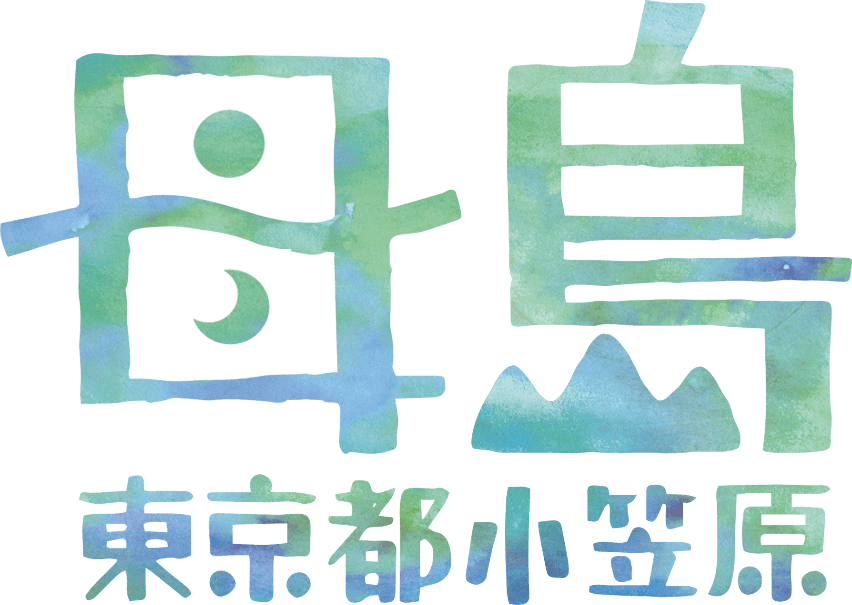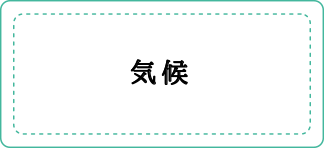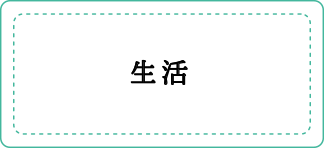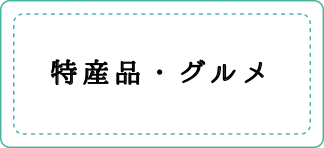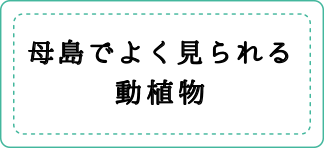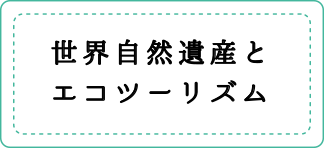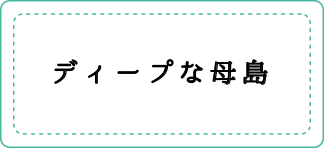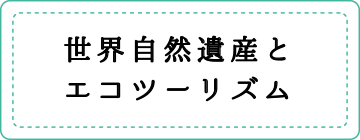知る
ディープな母島
これを知っておけば、母島をもっと楽しめるかもしれない情報をご紹介します。
■母島(小笠原)用語辞典
島で暮らす人たちが口にする用語です。これであなたも小笠原通。
| 用語 | 意味 |
|---|---|
| 内地 | 本土のこと。 |
| おが丸 | 東京と父島を結ぶ船「おがさわら丸」の略称。 |
| はは丸 | 父島と母島を結ぶ船「ははじま丸」の略称。 |

| 出港中 | おがさわら丸が父島に停泊していない期間。 観光のお客様が少なく、いつも以上にゆったりとした時間が流れる。 |
| 入港中 | おがさわら丸が父島に停泊している期間。 観光のお客様で島が賑わう期間・・・といっても、母島は父島と比べて宿泊者数も少ないため、そこまで人が溢れることはない。 |
| 入港日 | おがさわら丸が父島に入港する日のこと。小笠原の生活は7日ではなく6日間で回っている。この日は、商店に食べ物が入荷され、レジはたくさんの人が並ぶ、郵便や宅配便が自宅に届く。 |
| ガジュ下 | 母島のメインストリートの突き当り前浜にある大きなガジュマルの木の周辺のこと。母島のシンボル的な存在。昼間は子供を連れたお母さん、夜は仕事を終えた島民が缶ビールを片手に宴をしていることが多い |
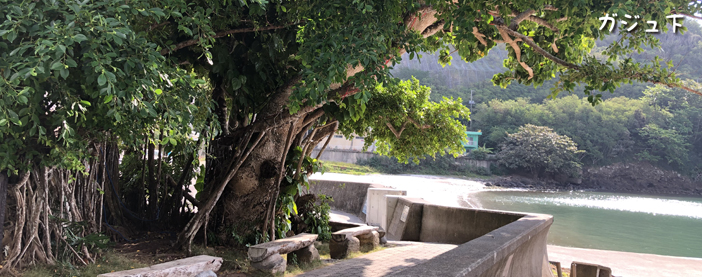
| ボニンブルー | ボニン=小笠原のこと。その昔、小笠原は無人島だったため、無人がなまって「ブジン」→「ムニン」→「ボニン」と呼ばれるようになった。 小笠原はどこまでもつづく深い青い海が特徴で、この独特の色合いを、島の旧称からボニンブルーと呼んでいる。 |
| いってらっしゃい | 船のお見送りの言葉。 |
| ギョサン | 漁業従事者用サンダルの略。濡れた場所でも滑りにくく、多くの島民が愛用している。色のバリエーションは豊富だが、たまにはき違いが発生するため、名前や印をつけている人も多い。お正月の「母島海びらき」では、このギョサンを飛ばす距離を競う、「ギョサン飛ばし大会」が開催される。 |
| ハハギョ | ギョサンの中でも母島限定で売られているギョサンのこと。通常のギョサンより柔らかく履きやすいが、色のバリエーションは少ない。現在非常に品薄となっている。 |
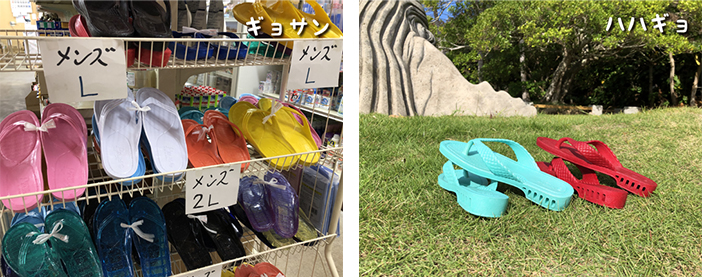
| 旧ヘリ | 2003年まで災害用と急患対策に使用していたヘリポートのこと。母島で星がきれいに見れる場所。 |
| センマチ | 沖港船客待合所のこと。母島観光協会はこの中にあります。 |
| 着発(ちゃくはつ) | おがさわら丸の着発運航のこと。東京を出て、父島に着いたおがさわら丸は通常、父島に3日間停泊するが、ゴールデンウィークや夏休みなどの繁忙期は、停泊せずに折り返し運転を行う。 |
| 海運(かいうん) | おがさわら丸の運航会社「小笠原海運株式会社」のこと。 |
| ドック入り、ドック中 | おがさわら丸が船の検査等の為、ドック(船渠)に入ると、内地との人の行き来がなくなり、本当の意味で絶海の孤島となる。 |
| シャワー室 | 前浜にある、トイレ・シャワー・テーブル・イスのある休憩舎のこと。日中はランチやお昼寝、夜は飲み会やバーベキューで賑わう。 |
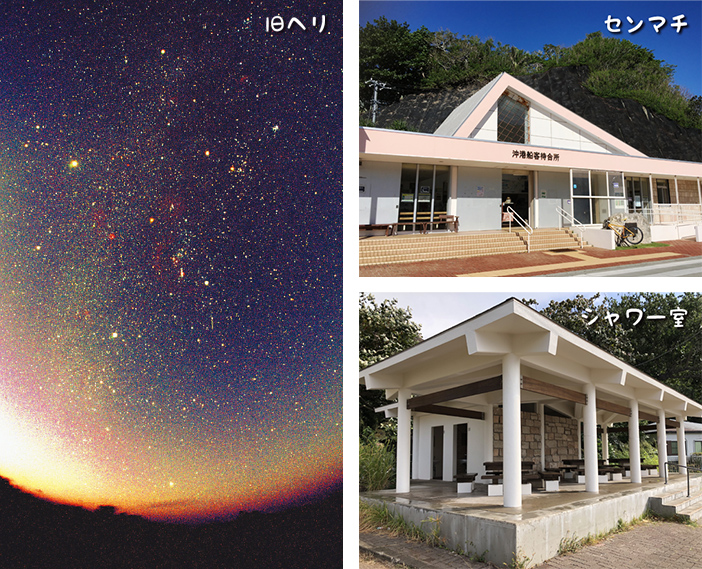
| 用語 | 意味 | 写真 |
|---|---|---|
| 内地 | 本土のこと。 | |
| おが丸 | 東京と父島を結ぶ船「おがさわら丸」の略称。 | 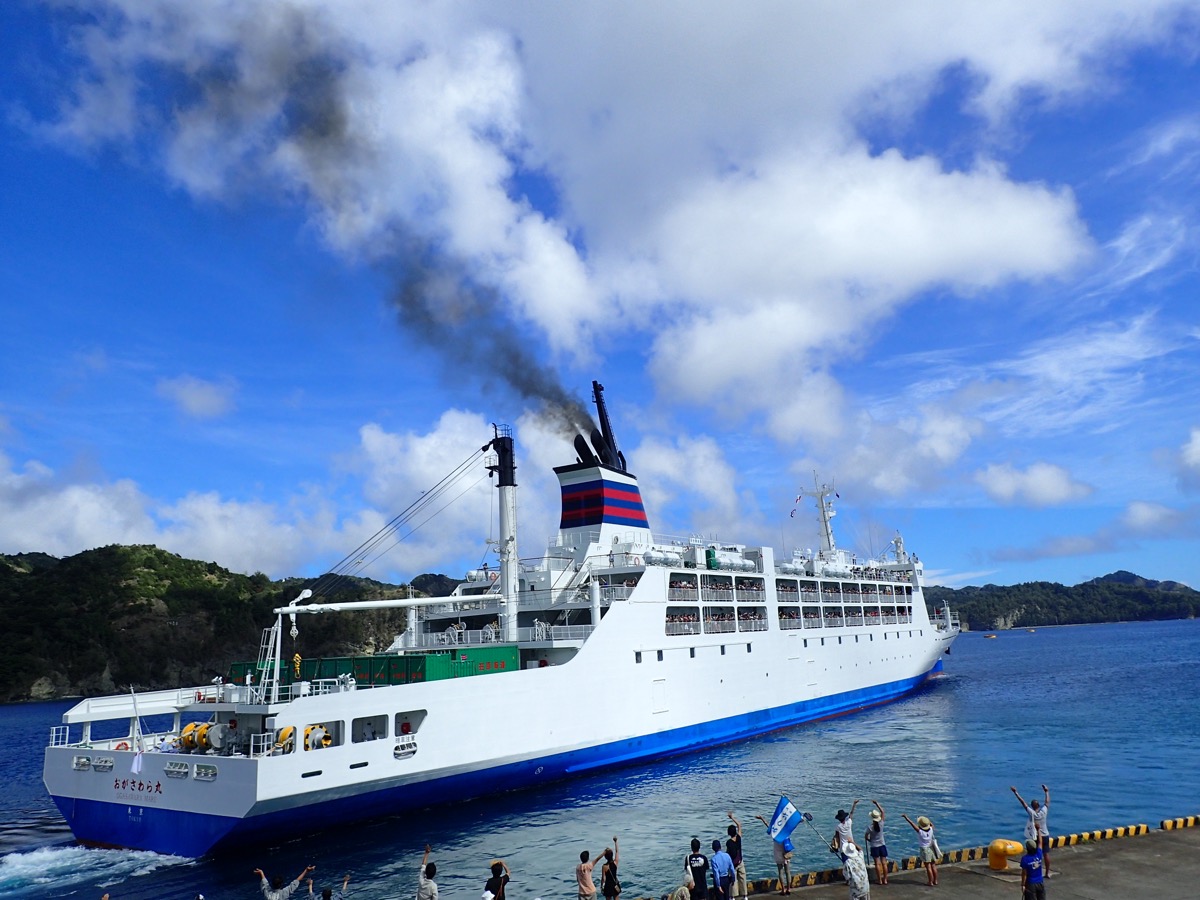 |
| はは丸 | 父島と母島を結ぶ船「ははじま丸」の略称。 |  |
| 出港中 | おがさわら丸が父島に停泊していない期間。 観光のお客様が少なく、いつも以上にゆったりとした時間が流れる。 |
|
| 入港中 | おがさわら丸が父島に停泊している期間。 観光のお客様で島が賑わう期間・・・といっても、母島は父島と比べて宿泊者数も少ないため、そこまで人が溢れることはない。 |
|
| 入港日 | おがさわら丸が父島に入港する日のこと。小笠原の生活は7日ではなく6日間で回っている。この日は、商店に食べ物が入荷され、レジはたくさんの人が並ぶ、郵便や宅配便が自宅に届く。 | |
| ガジュ下 | 母島のメインストリートの突き当り前浜にある大きなガジュマルの木の周辺のこと。母島のシンボル的な存在。昼間は子供を連れたお母さん、夜は仕事を終えた島民が缶ビールを片手に宴をしていることが多い | 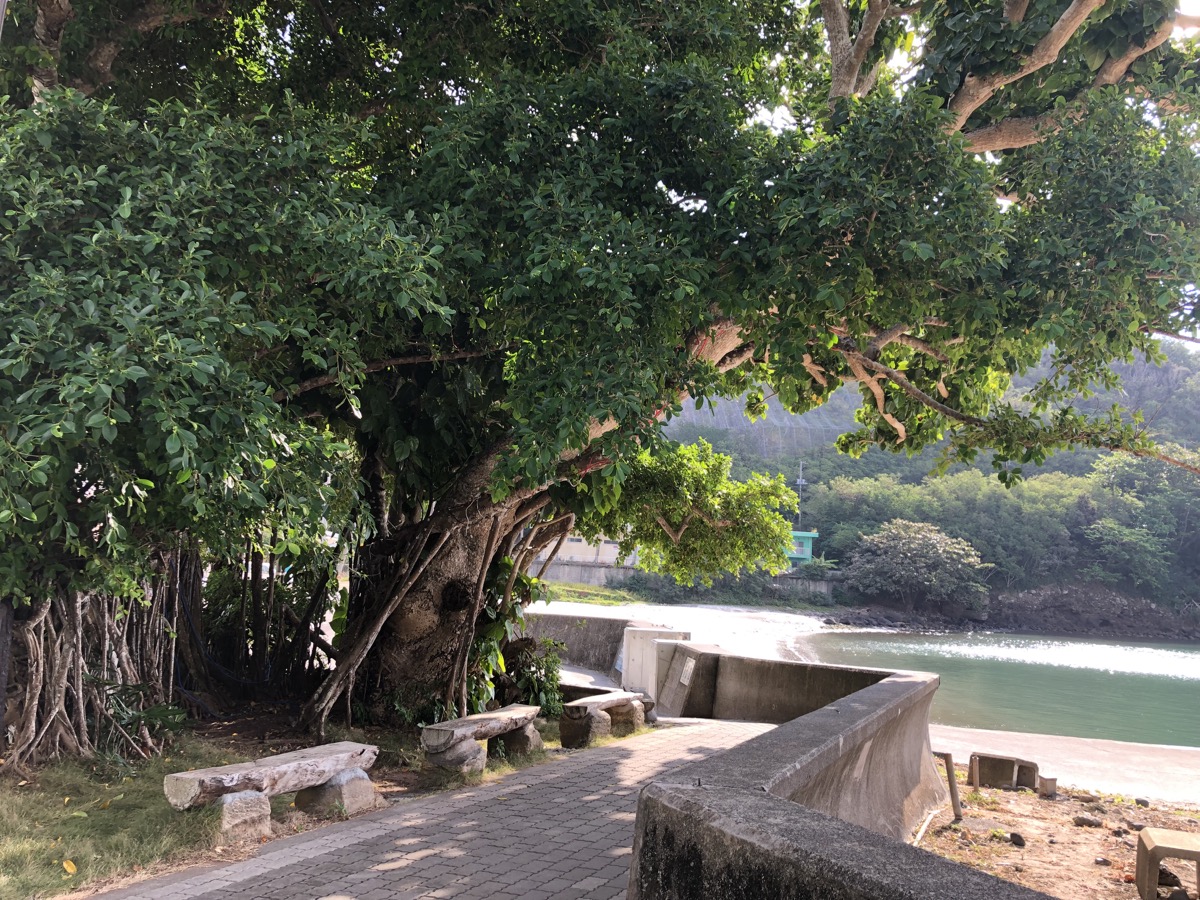 |
| ボニンブルー | ボニン=小笠原のこと。その昔、小笠原は無人島だったため、無人がなまって「ブジン」→「ムニン」→「ボニン」と呼ばれるようになった。 小笠原はどこまでもつづく深い青い海が特徴で、この独特の色合いを、島の旧称からボニンブルーと呼んでいる。 |
|
| いってらっしゃい | 船のお見送りの言葉。 | |
| ギョサン | 漁業従事者用サンダルの略。濡れた場所でも滑りにくく、多くの島民が愛用している。色のバリエーションは豊富だが、たまにはき違いが発生するため、名前や印をつけている人も多い。お正月の「母島海びらき」では、このギョサンを飛ばす距離を競う、「ギョサン飛ばし大会」が開催される。 | 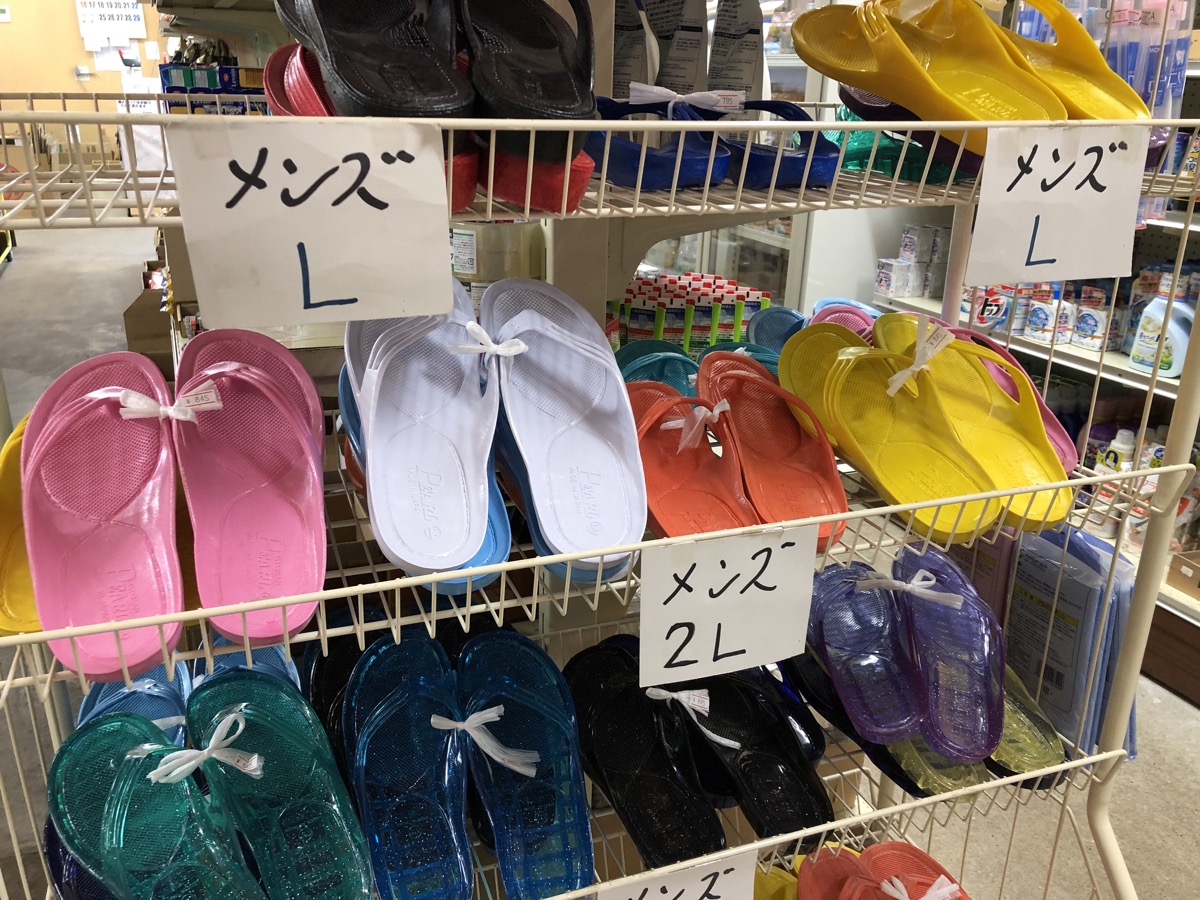 |
| ハハギョ | ギョサンの中でも母島限定で売られているギョサンのこと。通常の漁さんより柔らかく履きやすいが、色のバリエーションは少ない。現在非常に品薄となっている。 |  |
| 旧ヘリ | 2003年まで災害用と急患対策に使用していたヘリポートのこと。母島で星がきれいに見れる場所。 | 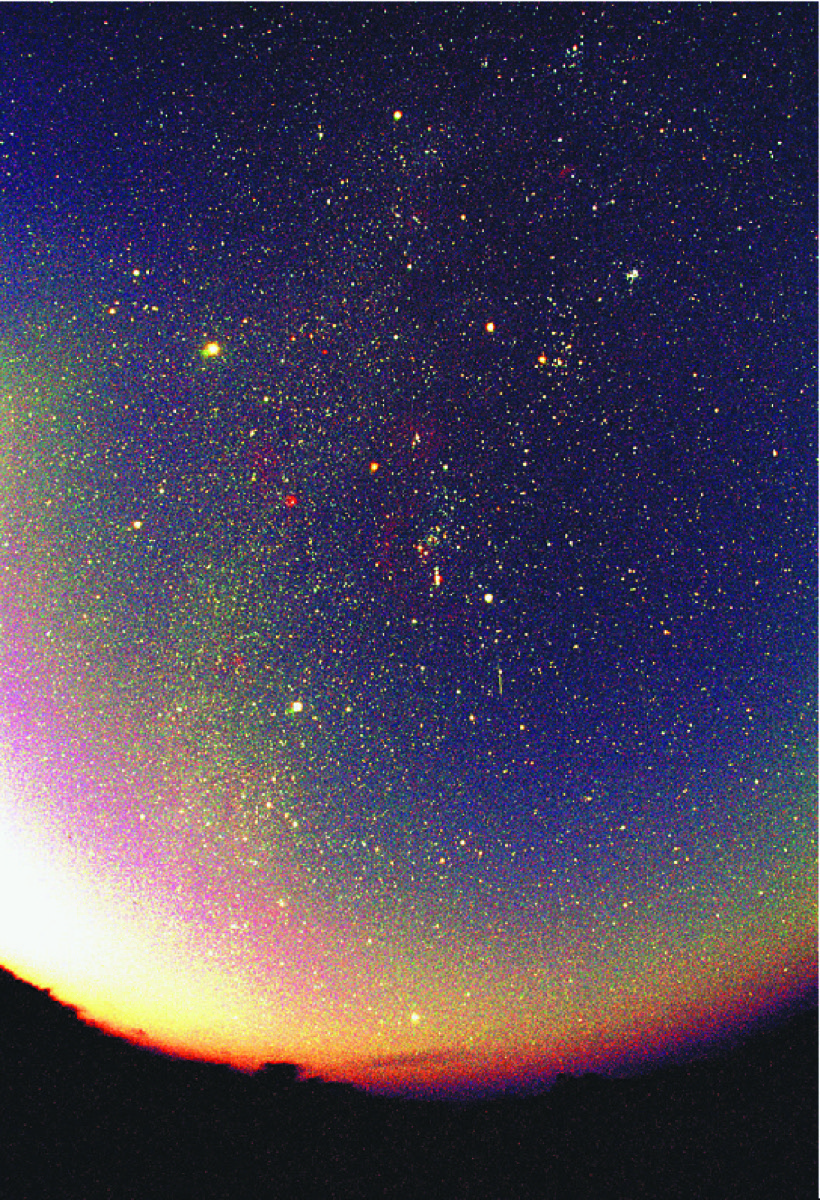 |
| センマチ | 沖港船客待合所のこと。母島観光協会はこの中にあります。 | 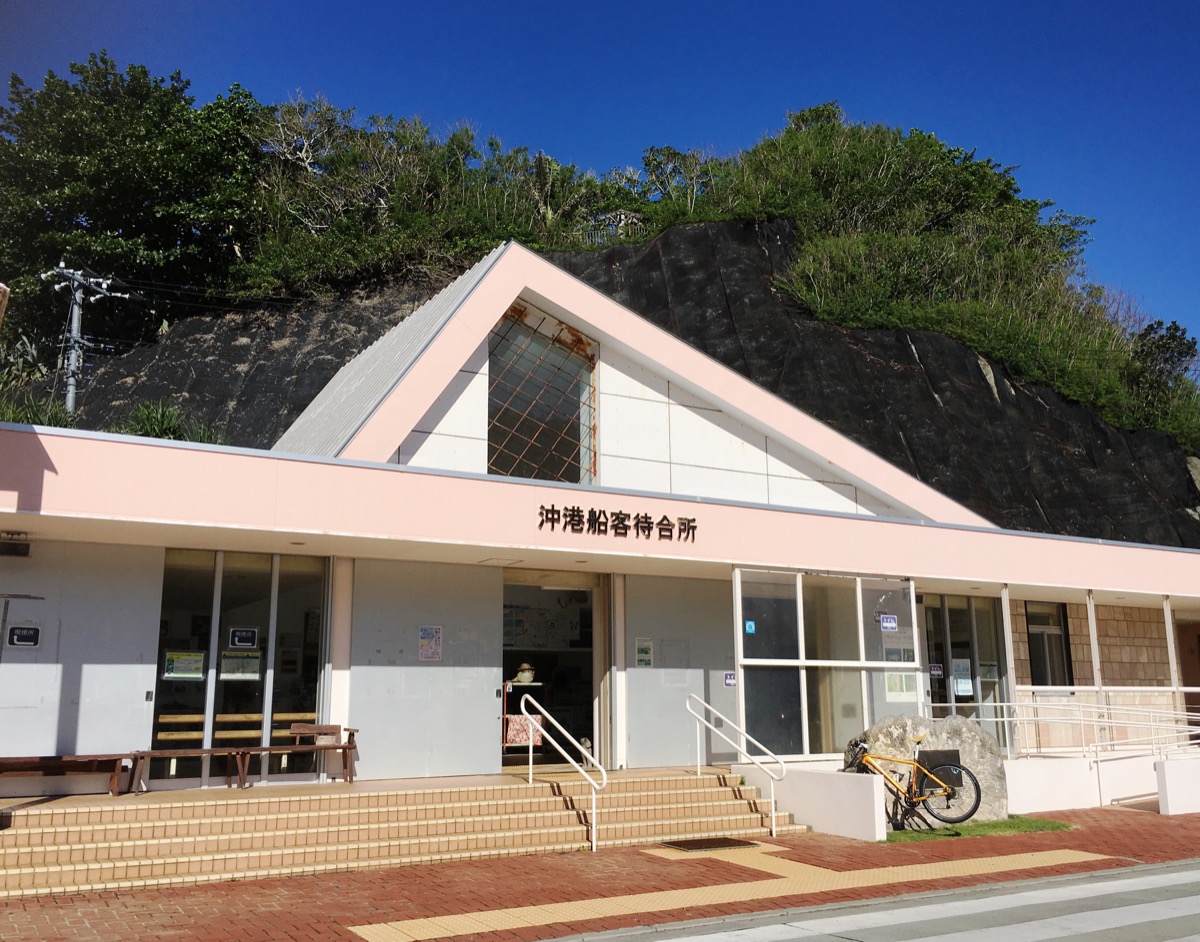 |
| 着発(ちゃくはつ) | おがさわら丸の着発運航のこと。東京を出て、父島に着いたおがさわら丸は通常、父島に3日間停泊するが、ゴールデンウィークや夏休みなどの繁忙期は、停泊せずに折り返し運転を行う。 | |
| 海運(かいうん) | おがさわら丸の運航会社「小笠原海運株式会社」のこと。 | |
| ドック入り、ドック中 | おがさわら丸が船の検査等の為、ドック(船渠)に入ると、内地との人の行き来がなくなり、本当の意味で絶海の孤島となる。 | |
| シャワー室 | 前浜にある、トイレ・シャワー・テーブル・イスのある休憩舎のこと。日中はランチやお昼寝、夜は飲み会やバーベキューで賑わう。 | 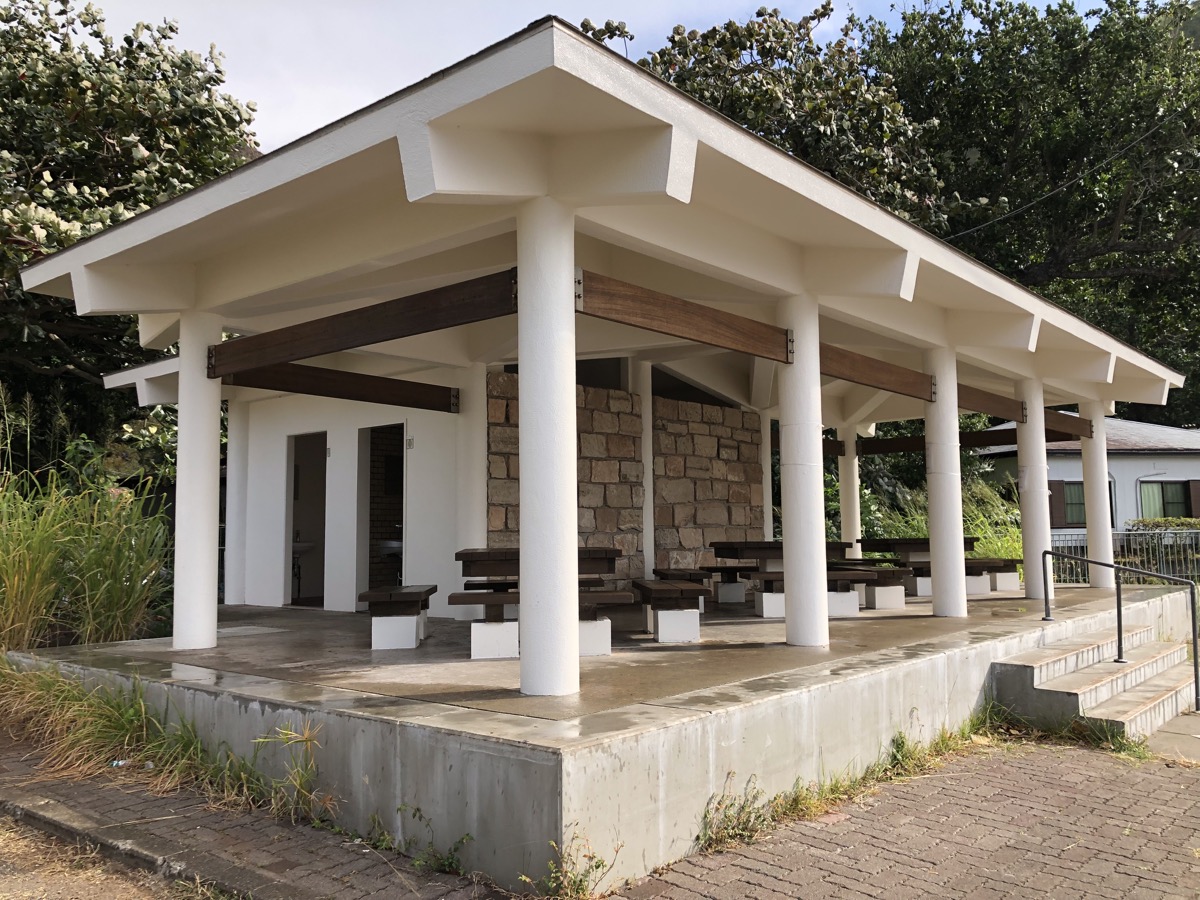 |
■母島(小笠原)あるある
母島では、他の土地とは違う独自のルールや習慣があります。
[お昼休みは90分]
日中暑く、外食できる店が少ないことから始まった習慣。朝は8時始業が多い。自宅で昼食をとる人や、海でひと泳ぎしてから仕事に戻る人もいるとか。
[髪型が大きく変わっていると、内地(本土)に上京したとすぐばれる]
母島には美容院がなく、内地に上京した際に、パーマやカラーをする人が多く、髪型が大きく変わっていると、「内地に行ってた?」と声をかけられることがしばしば。
[車は品川ナンバー]
東京竹芝から1050km離れているとはいえ東京都。車両は伊豆諸島と同じ、品川陸運事務所の管轄である。
[ご当地標識]
道路沿いの小笠原オリジナルの黄色の標識があります。とくに「メグロ」の標識は母島でしか見れません。ご来島の際は探してみて。
[アロハシャツは正装?]
1年中暖かな気候の小笠原では、スーツで仕事をしている人はほとんどいない。村役場の職員や宿のスタッフなどはアロハシャツを着て仕事をしている方が多く、式典等にもアロハシャツで出席する。
[商店が全店休業]
出港翌日が日曜、祭日の場合、3店ある商店がすべて休みとなってしまうことがあり、何も買うことができなくなる。
[一人一品持ち寄りパーティ]
飲食店が少ないため、飲み会などの集まりでは、各々が料理を持ち寄り、誰かの家や、外の休憩舎で宴が開かれることがしばしばある。
世界自然遺産とエコツーリズム
■世界自然遺産小笠原諸島について
「小笠原諸島」は、豊かで独特な自然の価値が認められ、平成23年(2011年)6月に世界自然遺産として登録されました。日本における世界自然遺産は、平成5年に「屋久島」「白神山地」、平成17年に「知床」が登録されており、『小笠原諸島』は4番目の登録でした。
■世界遺産としての価値
小笠原諸島の豊かで独特な自然は、平成23年6月にフランスのパリで開催された第35回世界遺産委員会において、世界自然遺産の4つの評価基準(『自然景観』『地形・地質』『生態系』『生物多様性』)のうちの『生態系』の評価基準に合致するとして評価され、同年6月29日に世界自然遺産として登録されました。
世界遺産委員会の審議では、小さい島でありながら、小笠原でしか見ることのできない固有種の割合が高いこと、特に陸産貝類(カタツムリの仲間)や植物において、進化の過程がわかる貴重な証拠が残されていることが高く評価されています。
世界自然遺産登録のキーとなった陸産貝類(カタツムリの仲間)は、父島ではほとんど絶滅してしまいましたが、母島の乳房山や石門では今も見ることができます。
■自然を守るための取り組み
小笠原の貴重な自然を守るために、行政が定めた法令の他、各団体が自主ルールを定めたり、自然を守るための取り組みを行っています。その一部をご紹介します。
[小笠原カントリーコード~自然と共生するための10カ条]
1999年環境省により定められた自然環境の保全と適正な利用をしていくためのルール。小笠原を訪れる全ての人が守るべきルールやマナーが記されている。
1貴重な小笠原を後世に引き継ぐ
2ゴミは絶対に捨てずに、すべて持ち帰る
3歩道をはずれて歩かない
4動植物は採らない、持ち込まない、持ち帰らない
5動植物に気配りしながらウォッチングを楽しむ
6サンゴ礁等の特殊地形を壊さない
7来島記念などの落書きをしない
8全島キャンプ禁止となっているので、キャンプしない
9移動は、できるだけ自分のエネルギーを使う
10水は大切にし、トイレなど公共施設はきれいに使う
[泥落としマット]
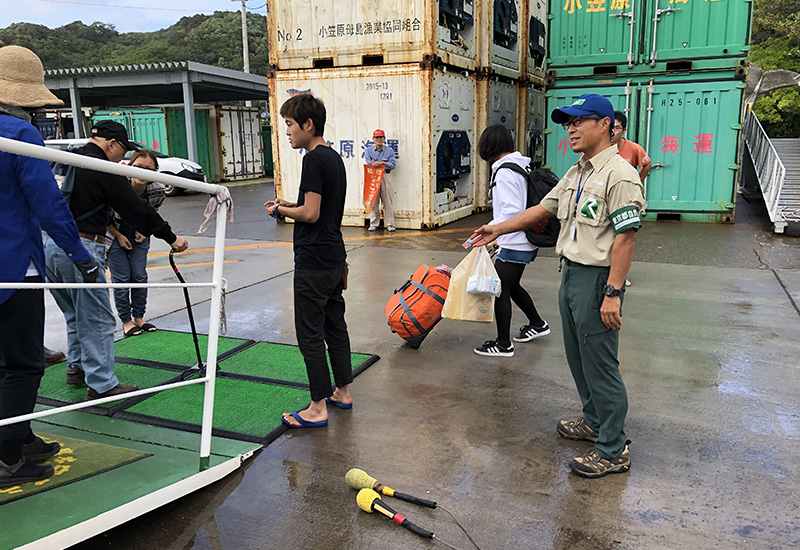
小笠原には、東京都内の自然公園の保護と適正な利用を図るため、東京都自然保護指導員(都レンジャー)が活動しており、船の入出港時に立ち会い、外来種が持ち込まれないように警戒している。
また、乳房山、南崎など遊歩道の入り口には、靴の裏に吹きかける酢酸のスプレーや、衣服の付着物をとるコロコロが置かれており、入山と下山時に靴底や服についた種子などを落とす。自然を守るために皆様のご協力をお願いいたします。
[小笠原ルールブック]
行政が定めた法令の他、各団体が定めた自主ルールなどを1冊にまとめた小冊子。
以下サイトで閲覧可能。
小笠原村役場ホームページ
リンク:
小笠原村公式サイト (vill.ogasawara.tokyo.jp)
母島でよく見られる動植物
■鳥
母島列島で繁殖している陸鳥は、以下の9種類です
●ハハジマメグロ(特別天然記念物)
●アカガシラカラスバト(天然記念物)
●オガサワラノスリ(天然記念物)
●オガサワラカワラヒワ
●ハシナガウグイス
●オガサワラヒヨドリ
●イソヒヨドリ
●トラツグミ
●メジロ
また、春と秋には●ハクセキレイ●ムナグロ●キョウジョシギ●ツバメチドリ●カツオドリなどが渡ってきます。時には珍しい迷鳥も来ます。
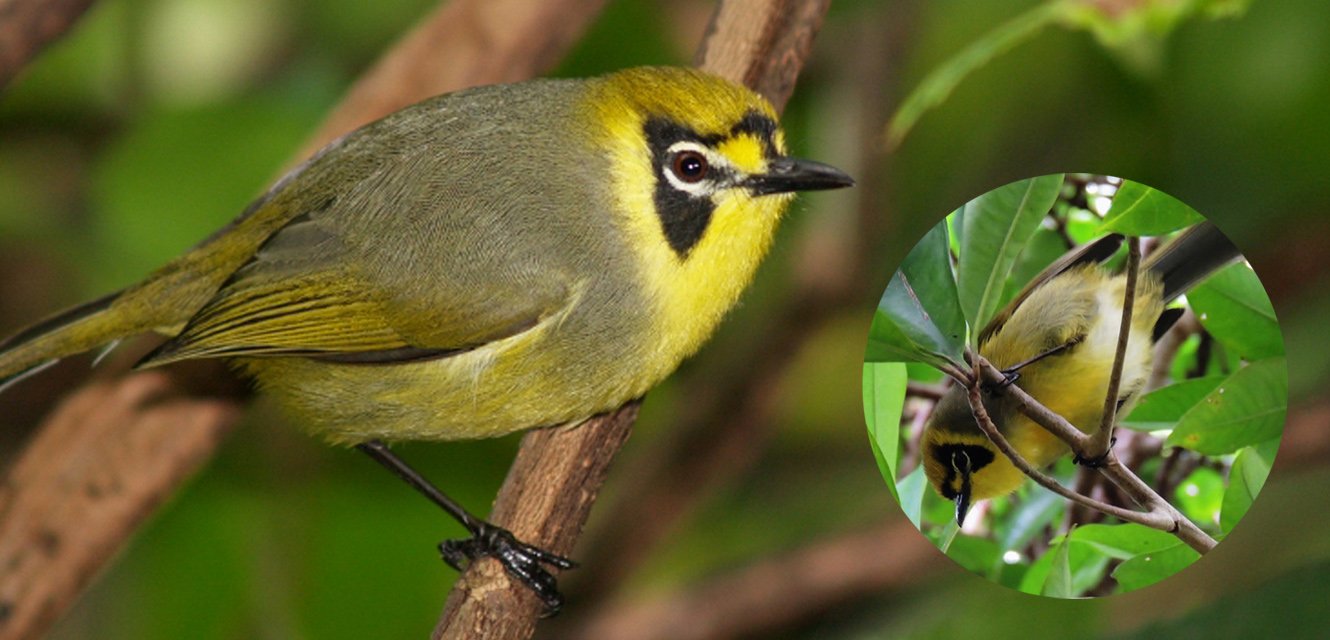
ハハジメグロ
母島列島にしか生息しない特別天然記念物の貴重な鳥。小笠原村の鳥に指定されている。メジロよりやや大きく名前の通り眼の周りに黒い三角の縁取りがある。トレッキング中はもちろん、集落内でも観察することができ、民家の庭の水場にもよく現れる。
夜はつがいが体を寄せ合う“接触睡眠”という眠り方をする。
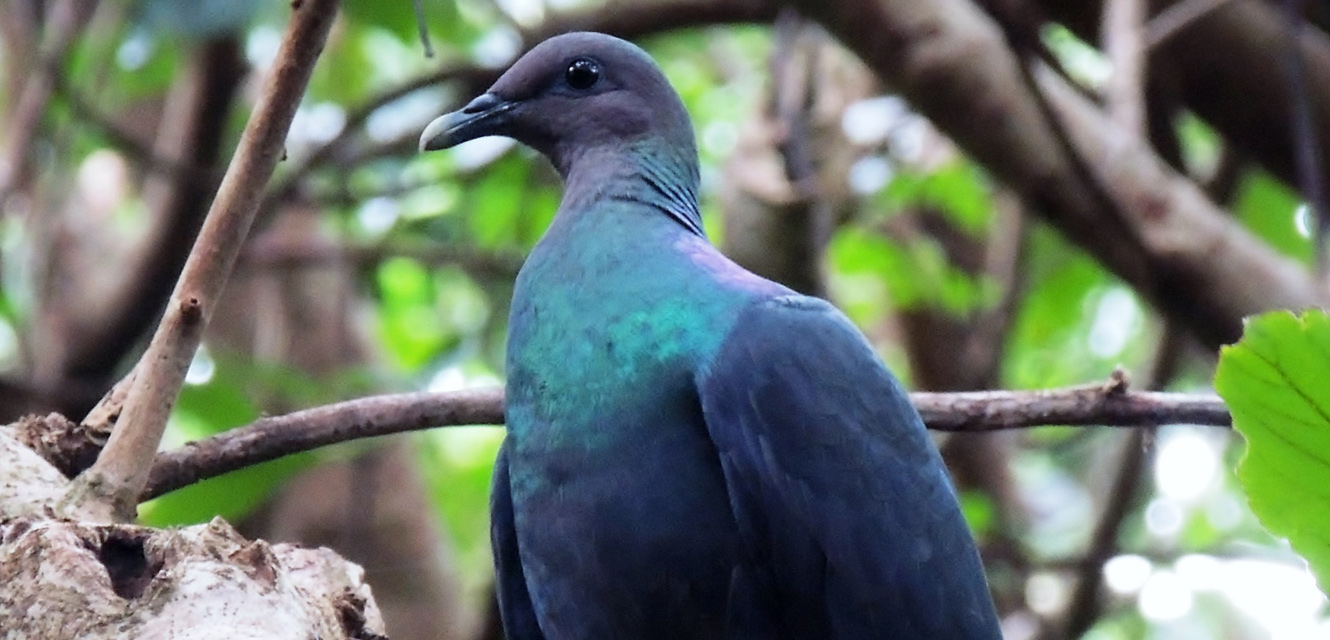
アカガシラカラスバト
固有亜種の天然記念物で絶滅危惧種に指定されている。体は黒っぽく首から胸にかけては光沢のある玉虫色で、頭は赤みがかかったブドウ色をしている。鳴き声が牛の声に似ている事から、昔はウシバトと呼ばれていた。行動範囲が広く、時期ごとにエサとなる木の実がある場所へ移動しているため、見られる場所は様々。
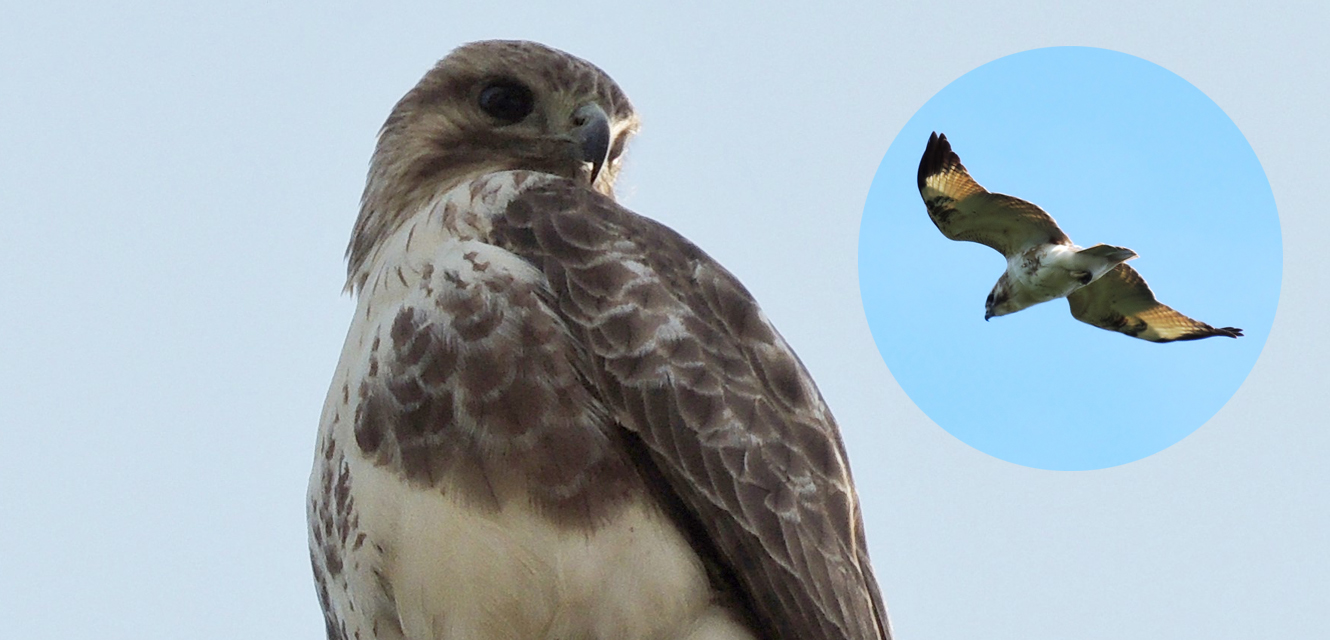
オガサワラノスリ
小笠原諸島固有(亜種)の唯一の猛禽類であり、国の天然記念物にも指定されているタカの科の鳥。体長は雄で50~52cm、メスで53~60cmで、翼長は122~137cmほど。内地で見られる“トンビ”よりもやや小柄で、オオヒキガエルやネズミ、オガサワラトカゲやグリーンアノール、そして小鳥などを餌としている。
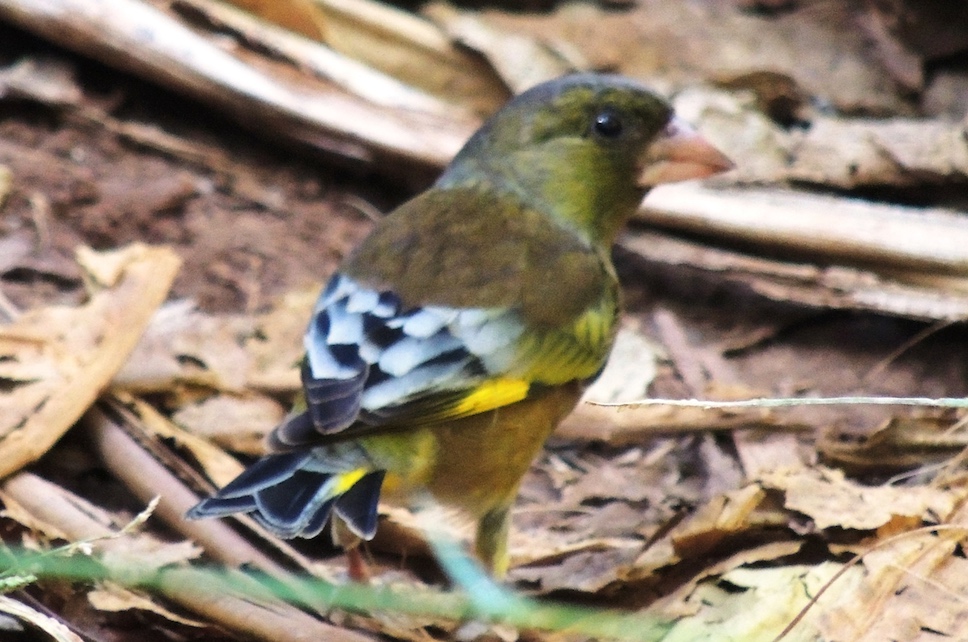
オガサワラカワラヒワ
固有亜種で3月から9月頃、母島本島で見られることもあるが、最近では数が減っている。5~10羽の群れで行動する。ムニンアオガンビなどの木の実や草の実を食べている。
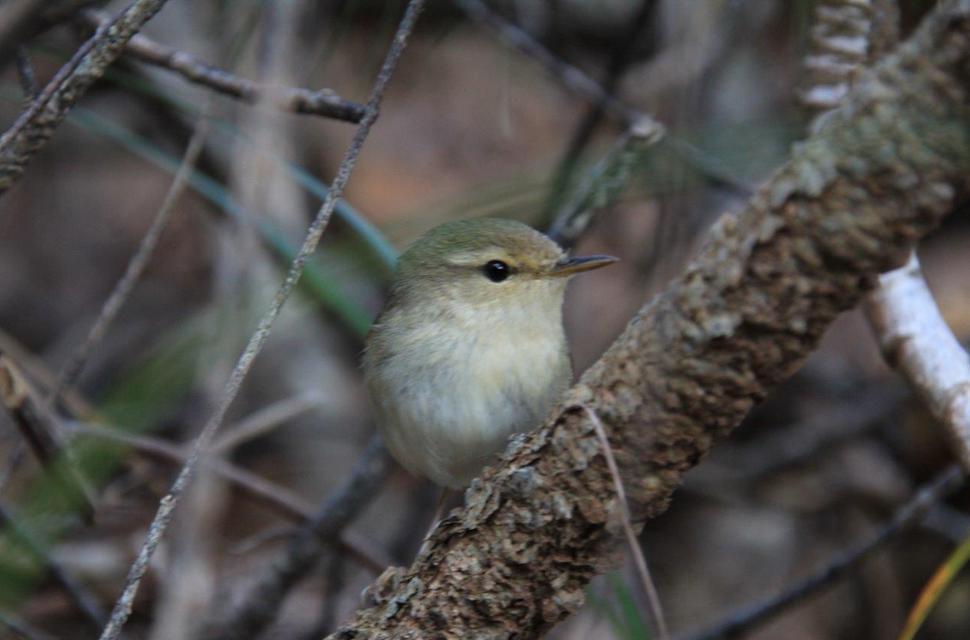
ハシナガウグイス
本州のウグイスと比べてひとまわり小柄。林の中でじっとしていると一番近くまで寄ってくる鳥。ホーホケッという鳴き方をする。
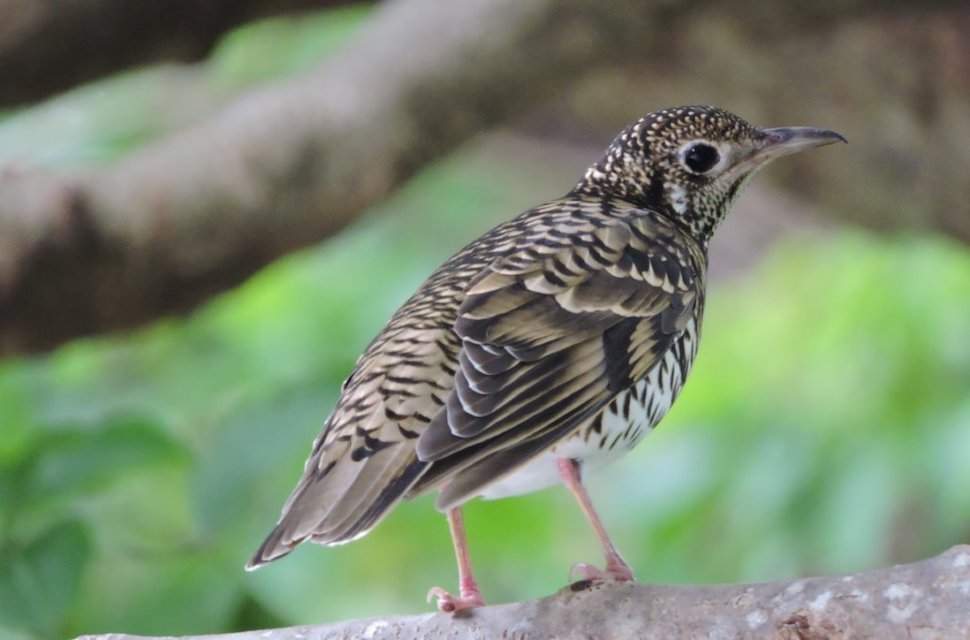
トラツグミ
戦後入ってきて留鳥となった。夜中にもの悲しげにヒヨーと鳴いている。繁殖期にはヒヨー、ホーと鳴くので島ではピーポードリと言われている。
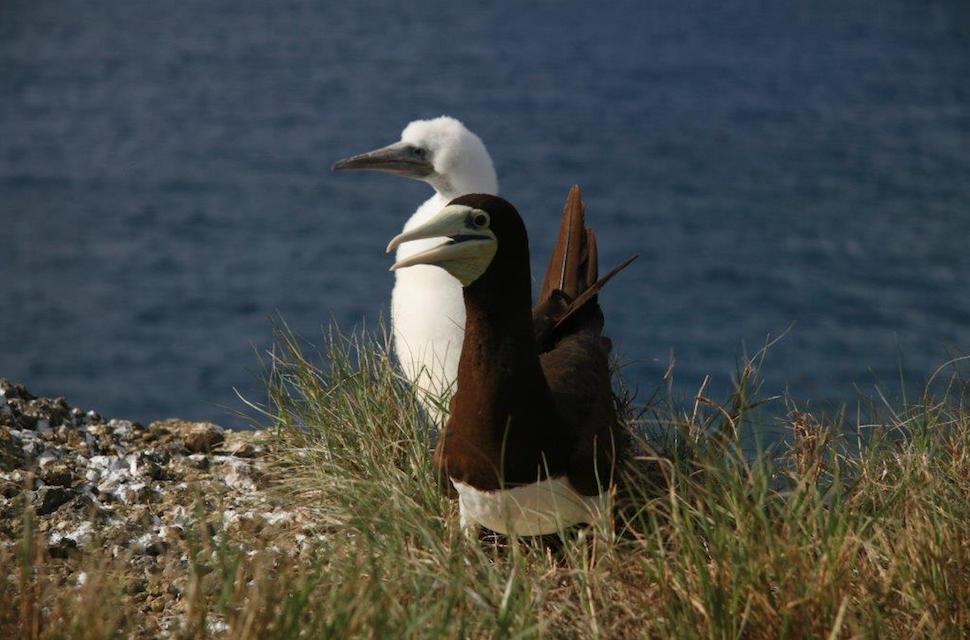
カツオドリ
5月から9月頃まで繁殖の為に渡ってくる。双眼鏡を使うと6~7月頃南崎小富士から向かい側にある鰹鳥島にヒナを見ることができる。海面に真っ直ぐに飛び込んで魚を捕らえる姿は見事。
■植物
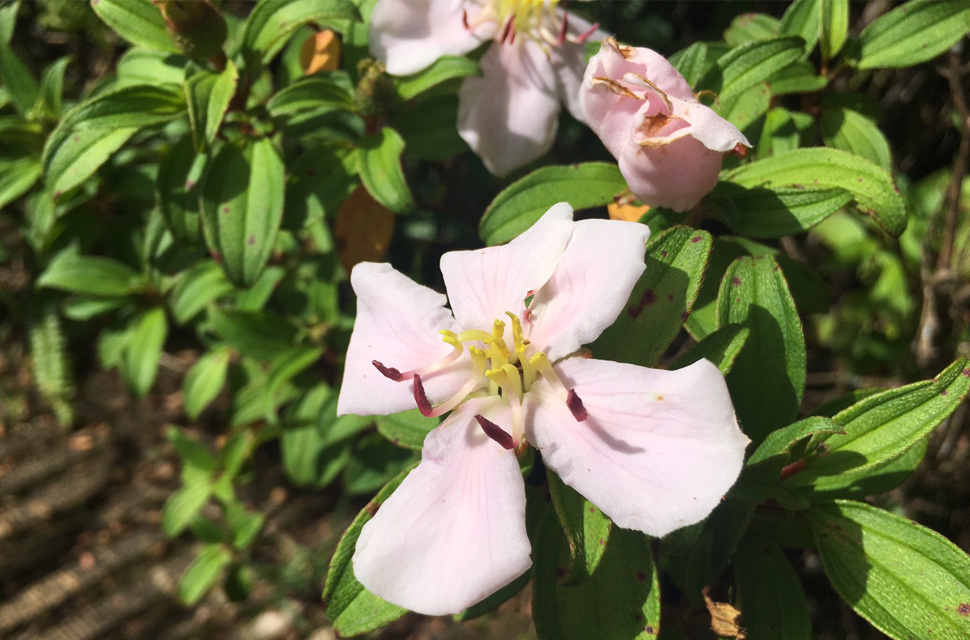
ハハジマノボタン(固有種)
母島だけに自生する希少植物。乳房山の頂上付近でよく見られる。淡桃色の5弁の花を咲かせる。
花期6~7月
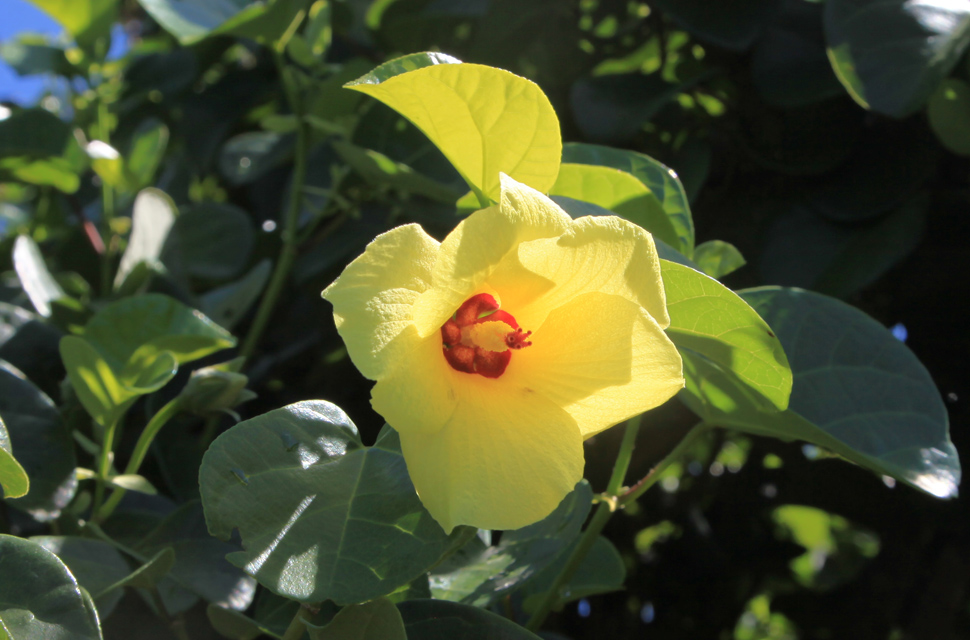
テリハハマボウ(固有種)
葉はハート形で黄色いハイビスカスに似た花をつける。花は一年中見られます。島名ヤマイチビ。
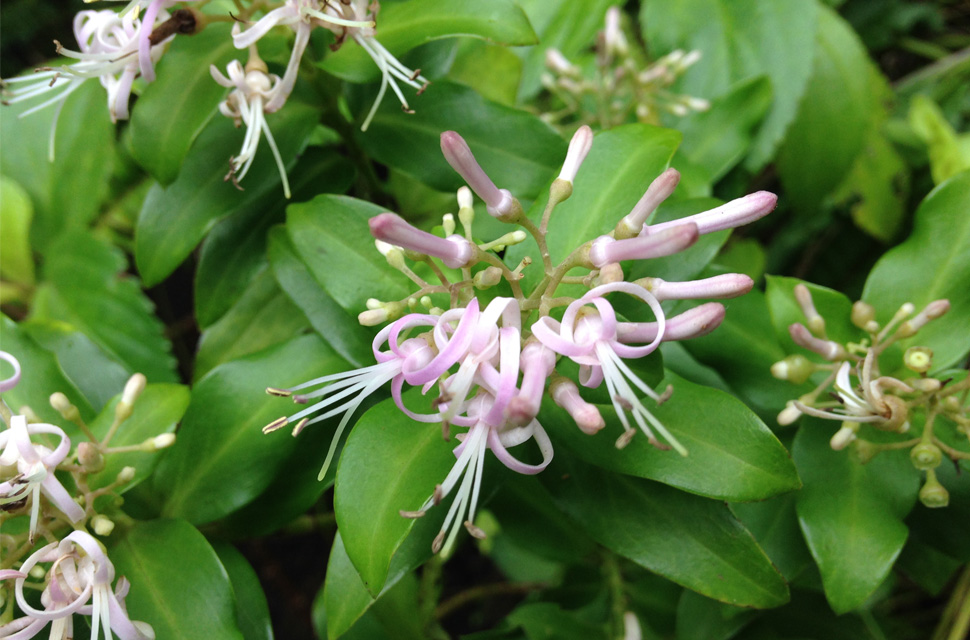
シマザクラ(固有種)
細長く紫色の筋の入った白い花を多く付ける。海岸から島の中央部まで広く分布している。
花期7~9月
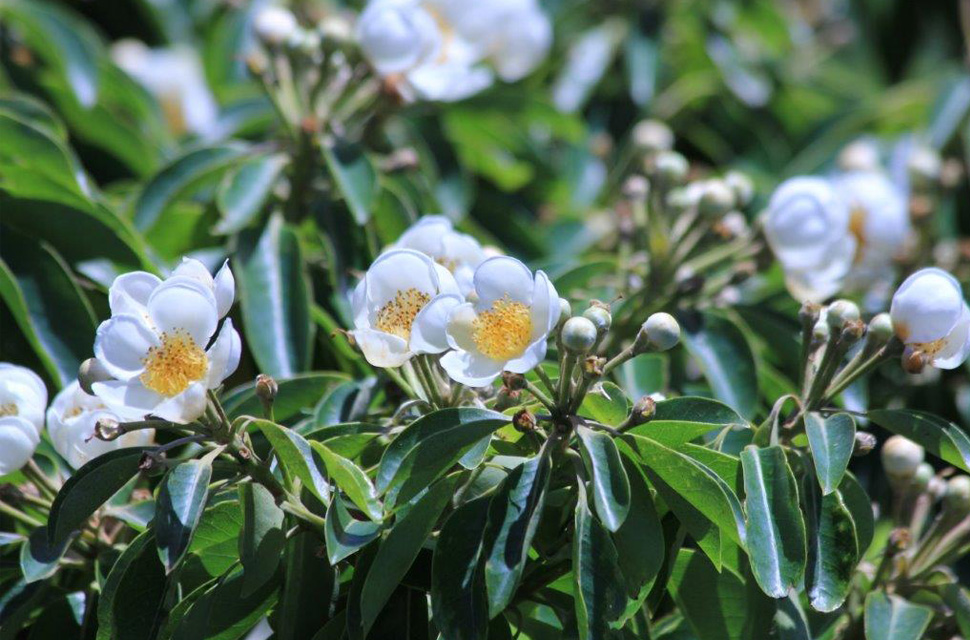
ムニンヒメツバキ(固有種)
6月に山が一面、白い花で埋まるほど一斉に開花する。花は甘い良い香りがする。小笠原の村の花に指定されている。
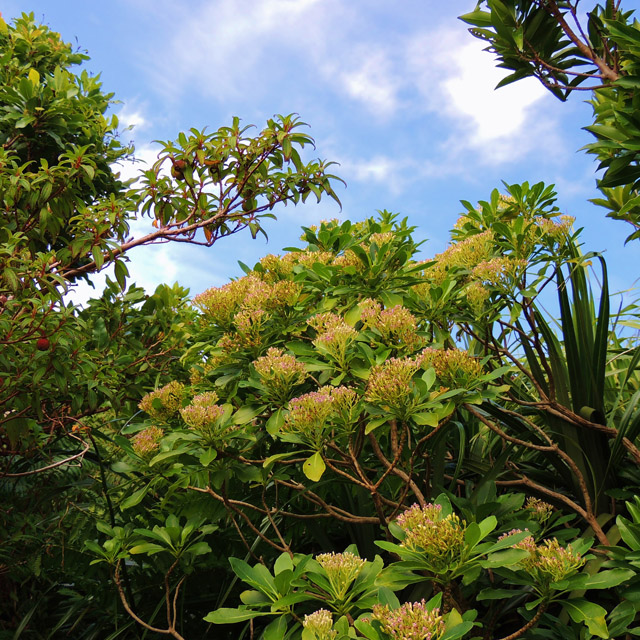
ワダンノキ(固有種)
母島列島のみに見られる小笠原固有種。キク科でありながら樹高5mにもなる樹木であるという、きわめて珍しい植物。
花期11~12月
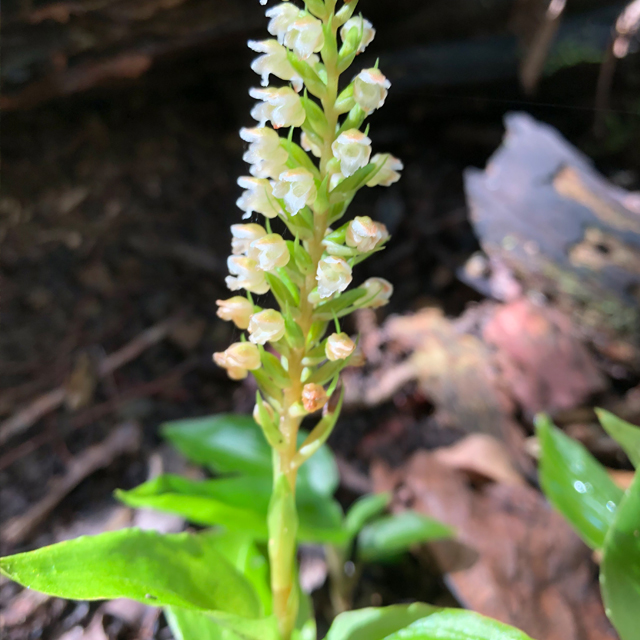
ムニンシュスラン(固有種)
乳房山の西側にある大きなガジュマルの下に群生している。踏まない様に足元に注意を。
花期10~1月
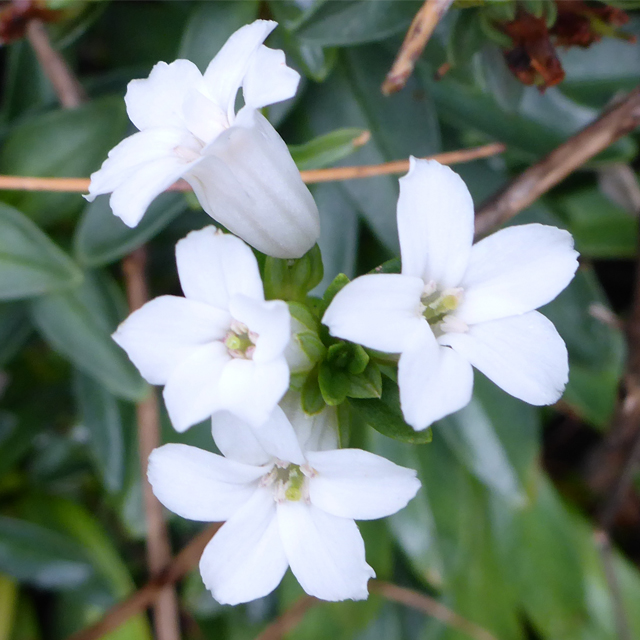
オオハマボッス (固有種)
多年生草本で、肉厚でつやつやした葉が根の際に集まっている。
花期は2~5月
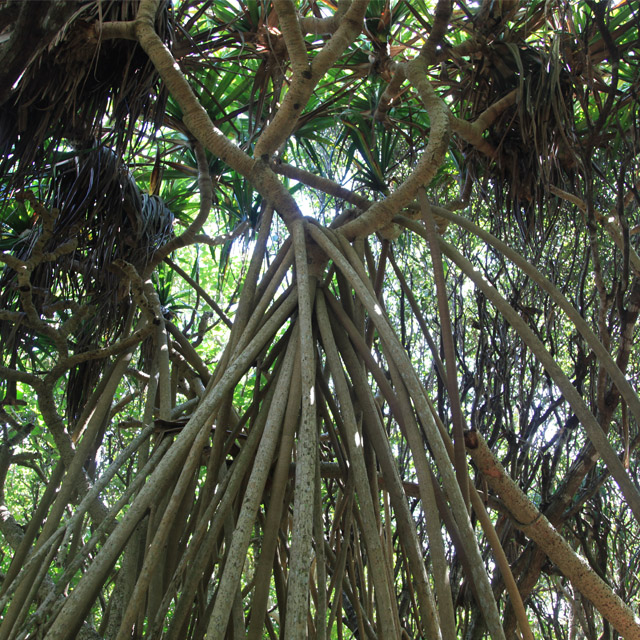
タコノキ(固有種)
海の近くに自生し、高さ10mほどになる。気根が支柱のように幹を取り巻きタコのように見える。数十個の果実が固まったパイイナップル状の集合をつける。
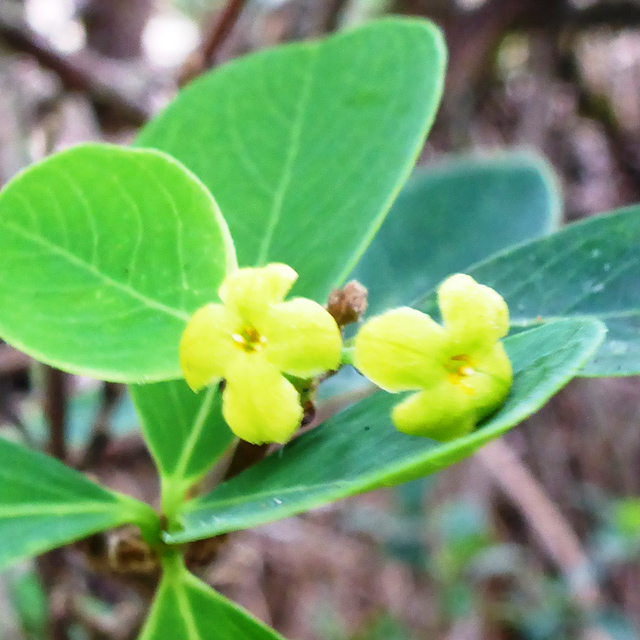
ムニンアオガンビ (固有種)
乾燥した岩場や尾根筋に自生する常緑低木林で、樹高1~2mになる。春と秋の2回、黄色の小さな花がたくさん咲き、わずかに香る。
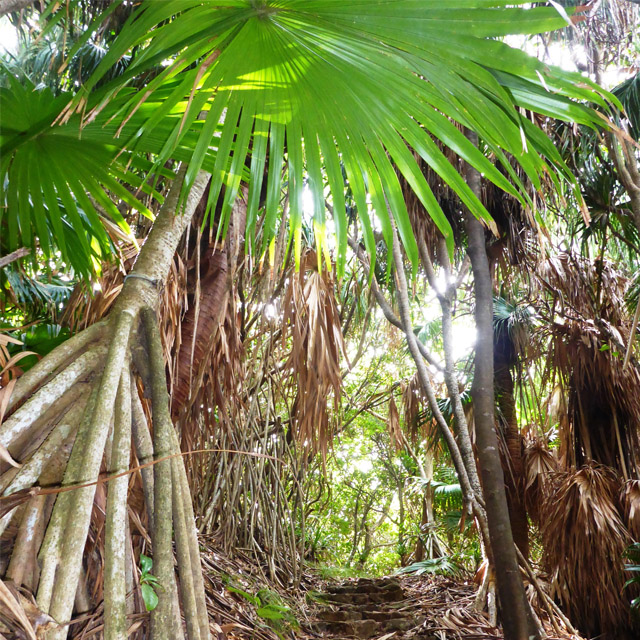
オガサワラビロウ (固有種)
海岸付近から尾根筋までの緩斜面に群生する常緑低木林で、樹高は10mになる。外見が似ていることから「シュロ」と呼ばれている。戦前は葉を屋根葺きに使用した。現在も休憩所の屋根に使用されている。
■その他の生き物
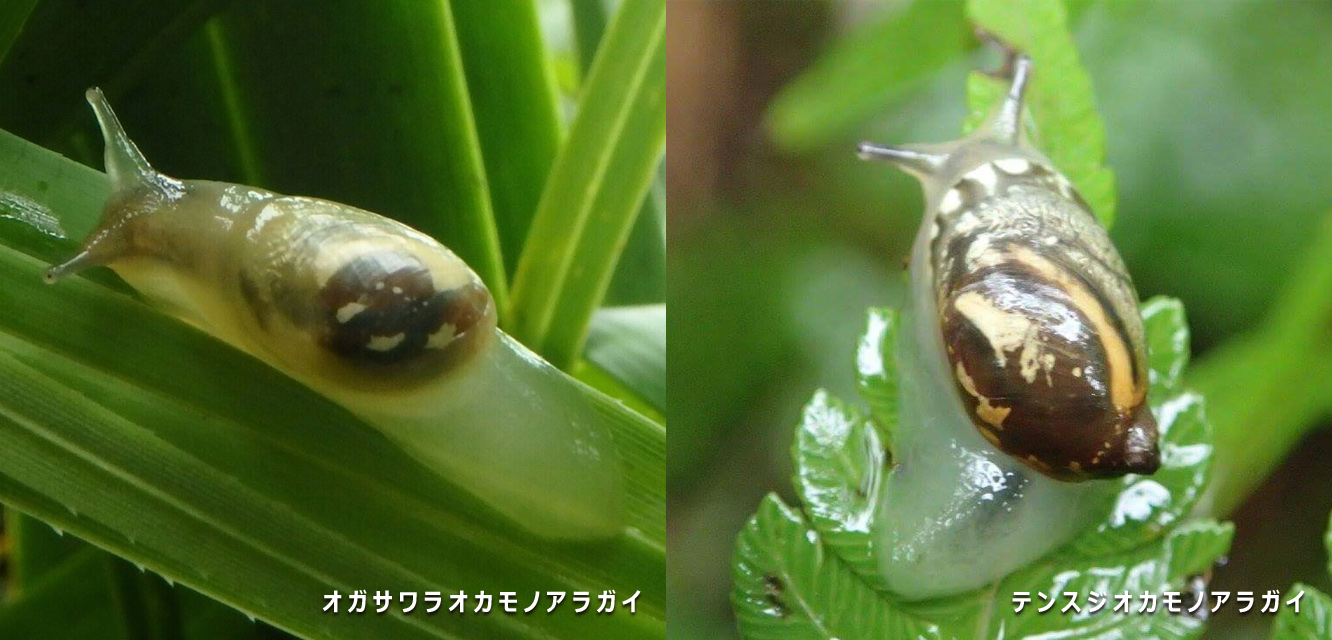
オガサワラオカモノアラガイ・テンスジオカモノアラガイ
オカモノアラガイ科、固有属テンスジオカモノアラガイ属(Boninosuccinea)。本属は2種、オガサワラオカモノアラガイとテンスジオカモノアラガイからなる。いずれも樹上性で、現在は父島では絶滅したと考えられており、母島でしか見ることができない。母島では、乳房山頂上付近や石門で見られる。
いずれも体長3cm程度で、テンスジオカモノアラガイは、比較的大きな殻を持っており、軟体を空にしまうことができる。一方、オガサワラオカモノアラガイは、殻が小さく退化しており、軟体を殻に完全に隠れることはない。
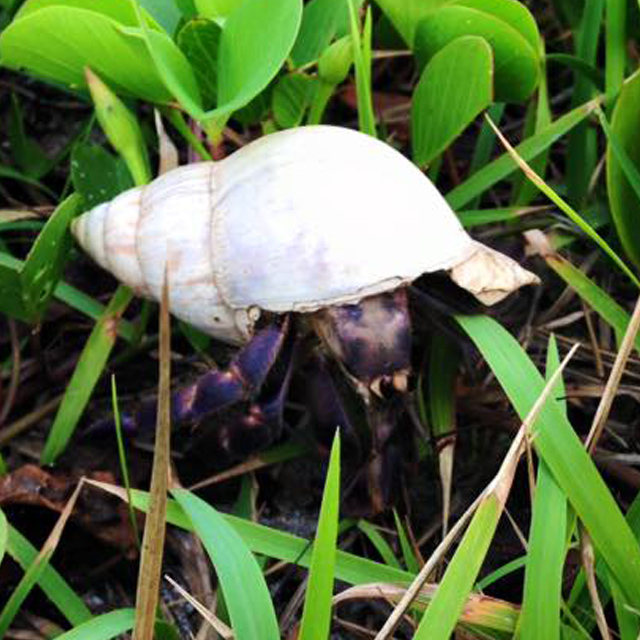
ムラサキオカヤドカリ(天然記念物)
陸生のヤドカリで、宿貝は外来種の陸生貝類(カタツムリ)アフリカマイマイのことが多い。拳サイズにまで成長する。通常は山に棲息しているが、産卵の時期には山から海に移動する。
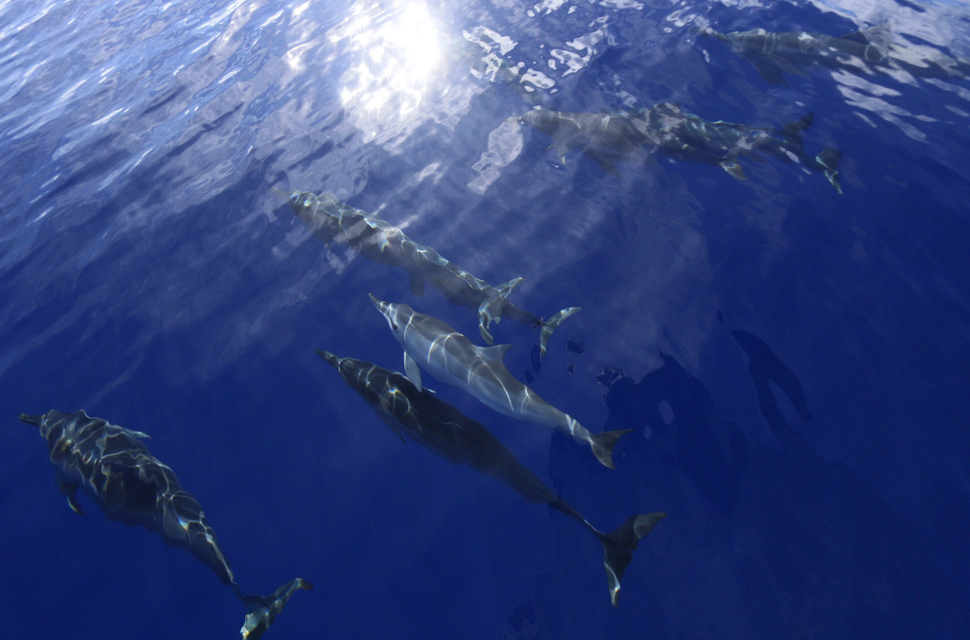
イルカ
小笠原近海では、通年イルカを見ることができる。主に見られるのは、ミナミハンドウイルカとハシナガイルカ。ミナミハンドウイルカは、体調2.5mほどで、単独から30頭を超す群れもある。好奇心が強くドルフィンスイム(イルカと一緒に泳ぐアクティビティ)に適している。ハシナガイルカは体調2mほどで、ミナミハンドウイルカより一回りほど小さく、くちばし(吻)部が長いのが特徴。数十から数百頭の群れで行動する。きりもみ(回転)ジャンプを行うこともあり、ウォッチングに適している。
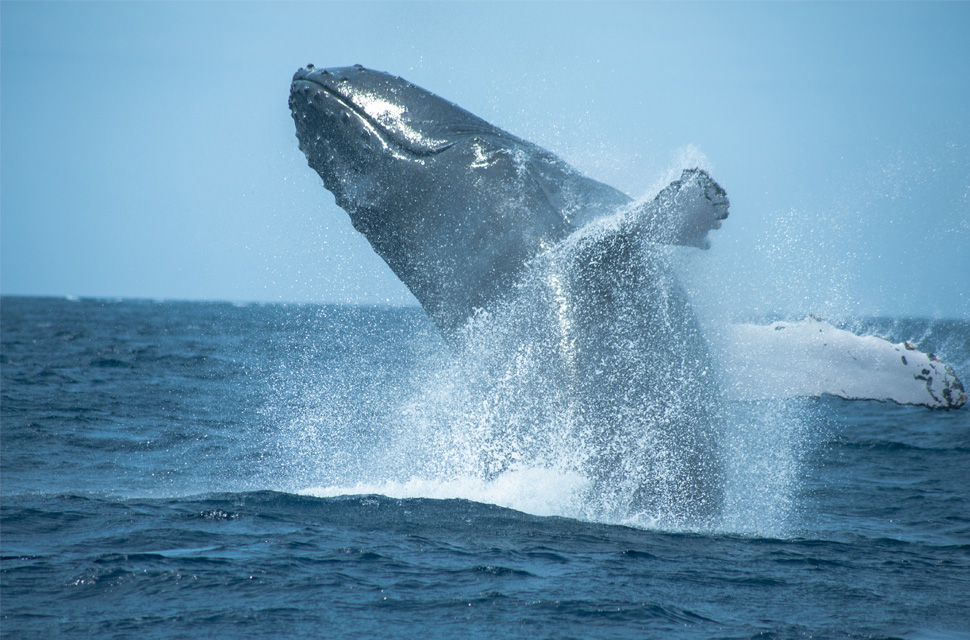
ザトウクジラ
成長すると体調13~14mに達し、雌のほう雄より一回り大きくなる。体調の約1/3ほどの長い胸びれ、頭部にある不規則なこぶ状の突起、低い隆起上の瀬切れが特徴。体色は背面が黒色で腹部は原則として白色だが、変異に富み、かなり黒色部分が広いものからほとんど黒のものもいる。繁殖のため12月~5月にかけて小笠原海域に回遊してくる。ホエールウォッチングには、海況が安定してくる2~4月が最適。親子クジラや、大きく跳躍するブリーチなどを間近で見られることもある。
特産品・グルメ
小笠原の特産品やグルメをご紹介します
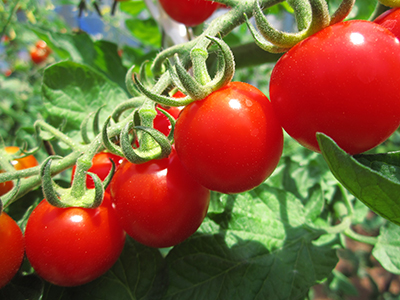
トマト
高糖度でほどよい酸味、果皮が薄いのが特徴。フルーツのように甘くておいしいと言われている。
トマトが苦手な方、お子様にもおすすめで、小笠原には、内地産のトマトは食べられなくても、小笠原のトマトは食べられるという子供たちも多い。
シーズン:12~5月
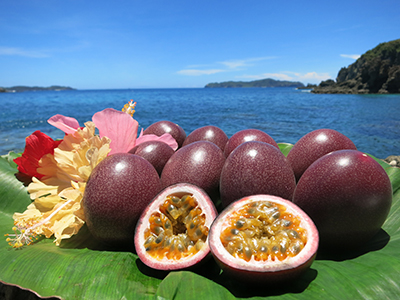
パッションフルーツ
南米原産のトロピカルフルーツ。爽やかな南国の香り、光沢があって鮮やかな色味、フルーティーな酸味と高糖度で果肉はぎっしり詰まっている。
生果の他にも、ジャムやジュース、島のラム酒を使ったパッションリキュール等、加工品も豊富。
シーズン:4~6月
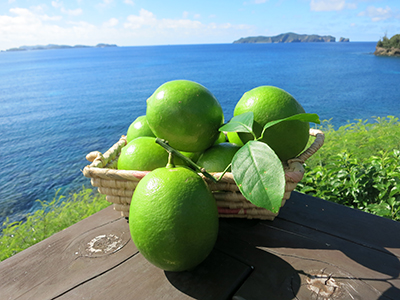
レモン
まろやかな酸味と爽やかな香りが特徴。青いうちが食べごろ。
焼酎の水割りに島レモンを浮かべた「水レモン」として飲まれている。ジャムやカードといった加工品も作られている。
シーズン:8~11月
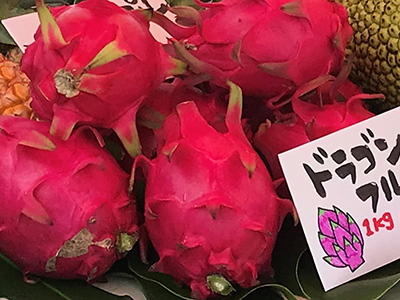
ドラゴンフルーツ
サボテンの実。果肉は品種により純白や鮮やかな赤紫色等で、とてもジューシー。冷やしてそのまま、または冷凍庫でシャーベットにして楽しめる。
シーズン:7~10月
カジキ類(メカジキ、バショウカジキなど)
この名の由来は、船側の梶木(和船船底部の板)を貫くような鋭い槍状の上顎を持つことからこの名がついたと言われる。小笠原での漁獲金額は1位。
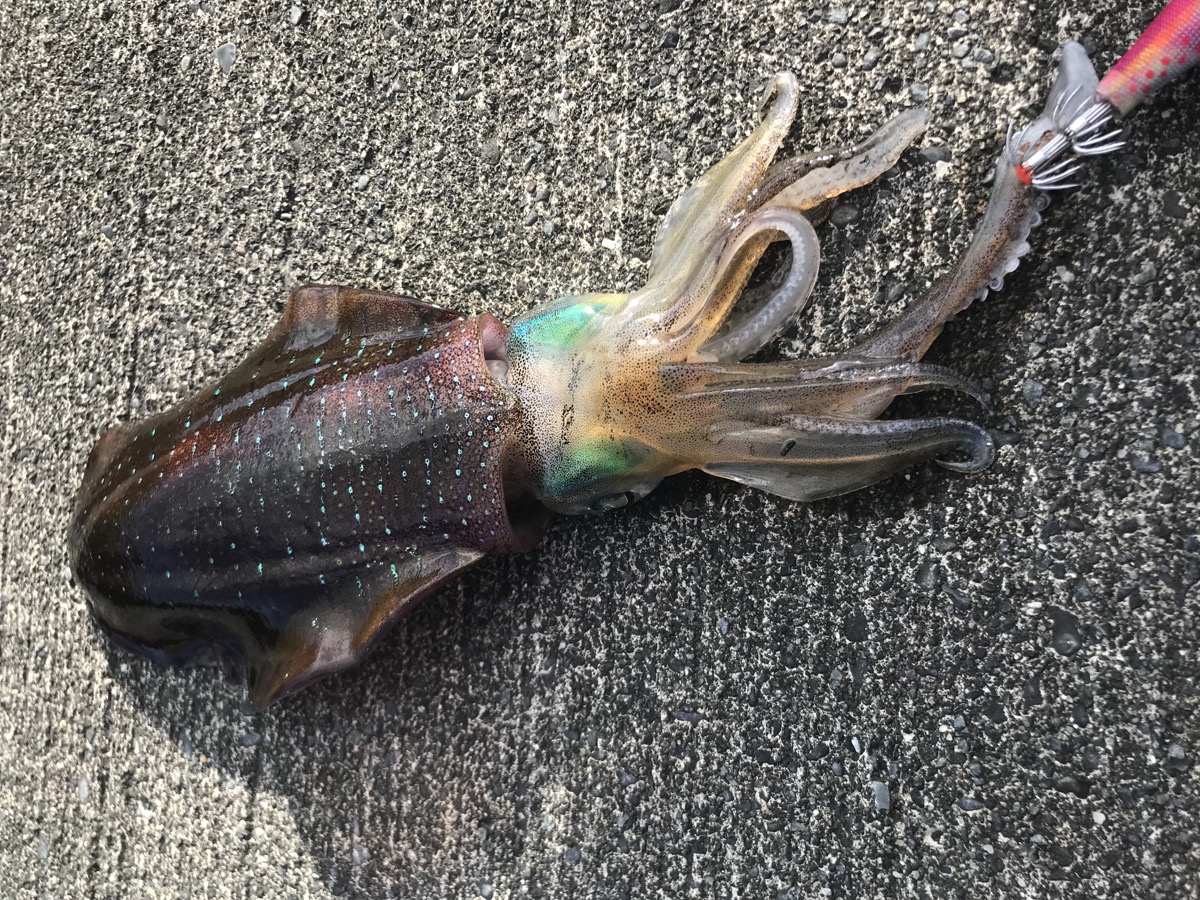
アオリイカ
本州地域などでは高級料亭でしか口にすることができないイカとして知られているが、小笠原では冬期に岸などで釣ることができる。母島では脇浜横堤防、東港等で釣れる。
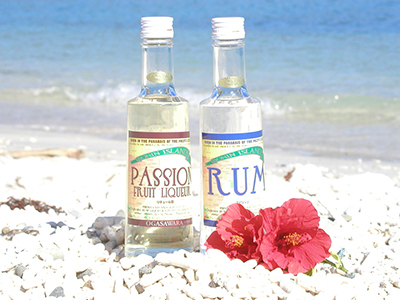
ラム酒
サトウキビを原料にした小笠原の地酒。1992年より販売開始。ラム酒に特産品のパッションフルーツを加えたパッションフルーツリキュールもある。
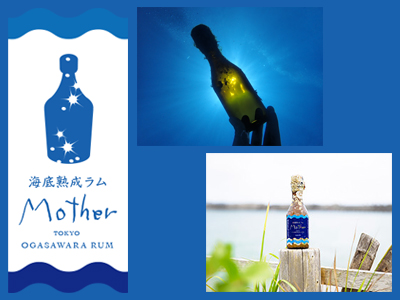
海底熟成ラムMother
小笠原の自然と歴史が生み出す、ラムの新ブランド「Mother」。戦前、サトウキビ栽培が盛んに行われていた小笠原では、当時からラムが作られ、小笠原のソウルスピリッツとして親しまれていました。
この「小笠原ラム」を、母島の海に沈めて海底熟成。小笠原が持つ「歴史」と、「母なる海」から生まれた、次世代に受け継いでいきたい、新しい東京のラムです。
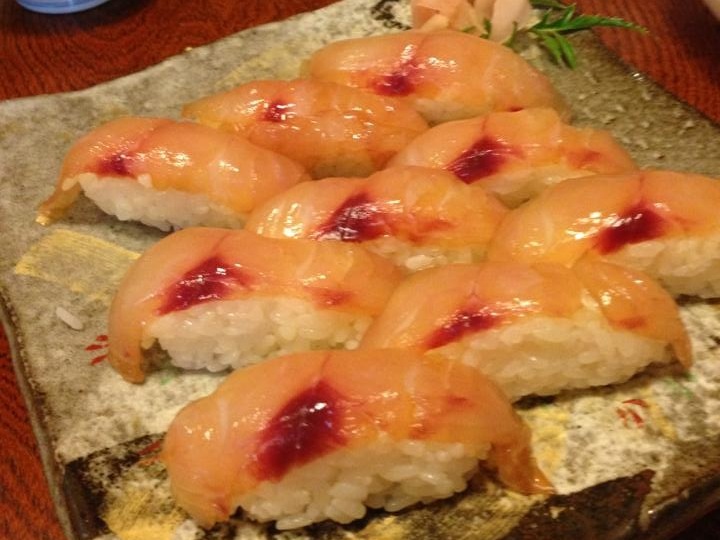
島寿司
小笠原の郷土料理と言えば、「島寿司」。サワラなど白身の魚を、醤油やみりんでづけにした握り寿司。ワサビではなくカラシが付いている。
もともと母島のおばあさんが冷蔵庫のない時代に保存目的で編み出した調理方法が、伊豆諸島や小笠原諸島全域に広がった。当時、島でわさびが手に入らなかったので、洋がらしを使用していた。
ウミガメ料理
小笠原の伝統的な郷土料理。さっぱりとした赤身は刺身や寿司で、クセの強い臓器などは煮込み料理で食べるのが一般的。父島は塩味、母島はしょうゆ味で煮込む。
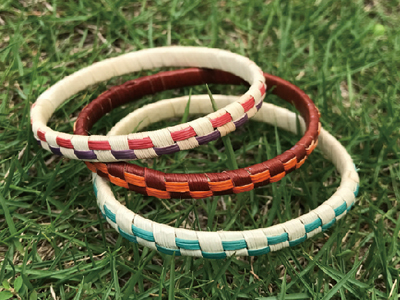
タコノ葉細工
小笠原の「村の木」であるタコノキの葉を使った小笠原の民芸品。一つ一つは全て手作業で行われており、材料となるタコノキの葉を採取してから、作るまでに大変な手間がかかる。自然の葉を使っているためか、使えば使うほどに風合いが良くなる。
その他の特産品
マンゴー、パパイヤ、ブンタン、バナナ、スターフルーツ、オクラ、シカクマメ、島とうがらし、オナガダイ、シマアジ、アカバ、イセエビなど
歴史
■暮らし
小笠原諸島は江戸時代に発見され、明治9年に日本領土として国際的に認められました。大正から昭和頃には、亜熱帯気候を活かした果物や冬野菜などの農業、漁業、捕鯨やサンゴ漁などで栄え、7,000人余り(母島は約2,000人)が暮らしていました。
昭和19年に戦局の悪化で全島民が強制疎開させられ島を離れました。終戦後、小笠原はアメリカ統治となり、母島は昭和43年に返還されるまで無人島だったため、返還後、島に戻った時には島中がジャングルと化していました(父島には米軍と欧米系島民が暮らしていた)。そのため、返還後もインフラ整備などに5年の歳月がかかり、一般島民の帰島が叶ったのは昭和48年でした。

生活
■暮らし
人口は約450人。戦前は2ヶ所あった集落も今は沖港のまわりの1ヶ所だけで、島民のほとんどが顔見知りです。集落内には商店が3軒、飲食店が5~6軒、薬局や娯楽施設はありません。高校がないため、子供は中学を卒業すると島を離れます(保育園、小中学校はあります)。テレビ放送は、昭和59年にNHKの衛星放送が、平成8年には地上波放送が、平成23年からは地上デジタル放送が開始されました。かつては、テレビ放送や娯楽施設がなかったこともあり、スポーツや音楽などのサークル活動や、スポーツ大会やお祭りなどのイベントが多く、現在でもほぼ毎月のようにイベントが開催されています。サークル活動では、年に一度父島との交流会もあり、島民の1/3くらいが参加します。職業は、農業、漁業、観光業、公務員が大半を占めています。携帯電話は平成11年からNTTドコモが、平成24年秋からは大手3社が利用できるようになりましたが、集落周辺以外は今もほぼ圏外です。
■イベントカレンダー
1月1日 新春海びらき
主催:海びらき実行委員会
初日の出登山・初泳ぎ・小笠原太鼓初打ち・南洋踊り・鏡開き・ギョサン飛ばし大会・アオウミガメの放流・ラム酒の試飲等。観光客と島民がいっしょになって楽しむお祭り。
6月下旬 母島返還祭
主催:返還祭実行委員会
小笠原の日本への返還を祝う祭。
島民の演芸やカラオケ、盆踊りの他、花火が上がる。各団体による模擬店もある。
島民のデザインによる返還記念オリジナルTシャツが人気。
7〜8月 サマーフェスティバル
主催:母島観光協会
7月下旬~8月の間、本格的な衣装をつけての南洋踊り体験会、孵化したての稚亀の放流&星空観察、アオウミガメ放流などのイベントを実施する。
8月下旬 母島納涼祭
主催:母島壮年会
盆踊りと模擬店。最後にやぐらの周りに輪になって参加者全員で小笠原望郷歌を歌い、祭りを締めくくる。
9月中旬~下旬頃 母島カノー大会
主催:母島カノー倶楽部 母島観光協会
伝統のアウトリガーカヌーを使用したカヌー競漕。カヌー体験乗船会もある。
10月第2日曜日 御嶽神社祭り
主催:農業関係者
農業の神様を奉ってある御嶽神社のお祭り。小笠原太鼓・カラオケがある。
11月23日 月ヶ岡神社祭り
主催:月ヶ岡神社氏子
御輿・山車・子供たちのチンドン屋が島内を賑やかにまわる。夜は屋台も出て、小笠原太鼓・カラオケで盛り上がる。
島内清掃・海岸清掃
主催:母島観光協会
島内清掃・海岸清掃を島民と観光客参加で実施する。
■イベントカレンダー
1月1日 新春海びらき
主催:海びらき実行委員会
初日の出登山・初泳ぎ・小笠原太鼓初打ち・南洋踊り・鏡開き・ギョサン飛ばし大会・アオウミガメの放流・ラム酒の試飲等。観光客と島民がいっしょになって楽しむお祭り。
6月下旬 母島返還祭
主催:返還祭実行委員会
小笠原の日本への返還を祝う祭。
島民の演芸やカラオケ、盆踊りの他、花火が上がる。各団体による模擬店もある。
島民のデザインによる返還記念オリジナルTシャツが人気。
7〜8月 サマーフェスティバル
主催:母島観光協会
7月下旬~8月の間、本格的な衣装をつけての南洋踊り体験会、孵化したての稚亀の放流&星空観察、アオウミガメ放流などのイベントを実施する。
8月下旬 母島納涼祭
主催:母島壮年会
盆踊りと模擬店。最後にやぐらの周りに輪になって参加者全員で小笠原望郷歌を歌い、祭りを締めくくる。
9月中旬~下旬頃 母島カノー大会
主催:母島カノー倶楽部 母島観光協会
伝統のアウトリガーカヌーを使用したカヌー競漕。カヌー体験乗船会もある。
10月第2日曜日 御嶽神社祭り
主催:農業関係者
農業の神様を奉ってある御嶽神社のお祭り。小笠原太鼓・カラオケがある。
11月23日 月ヶ岡神社祭り
主催:月ヶ岡神社氏子
御輿・山車・子供たちのチンドン屋が島内を賑やかにまわる。夜は屋台も出て、小笠原太鼓・カラオケで盛り上がる。
島内清掃・海岸清掃
主催:母島観光協会
島内清掃・海岸清掃を島民と観光客参加で実施する。
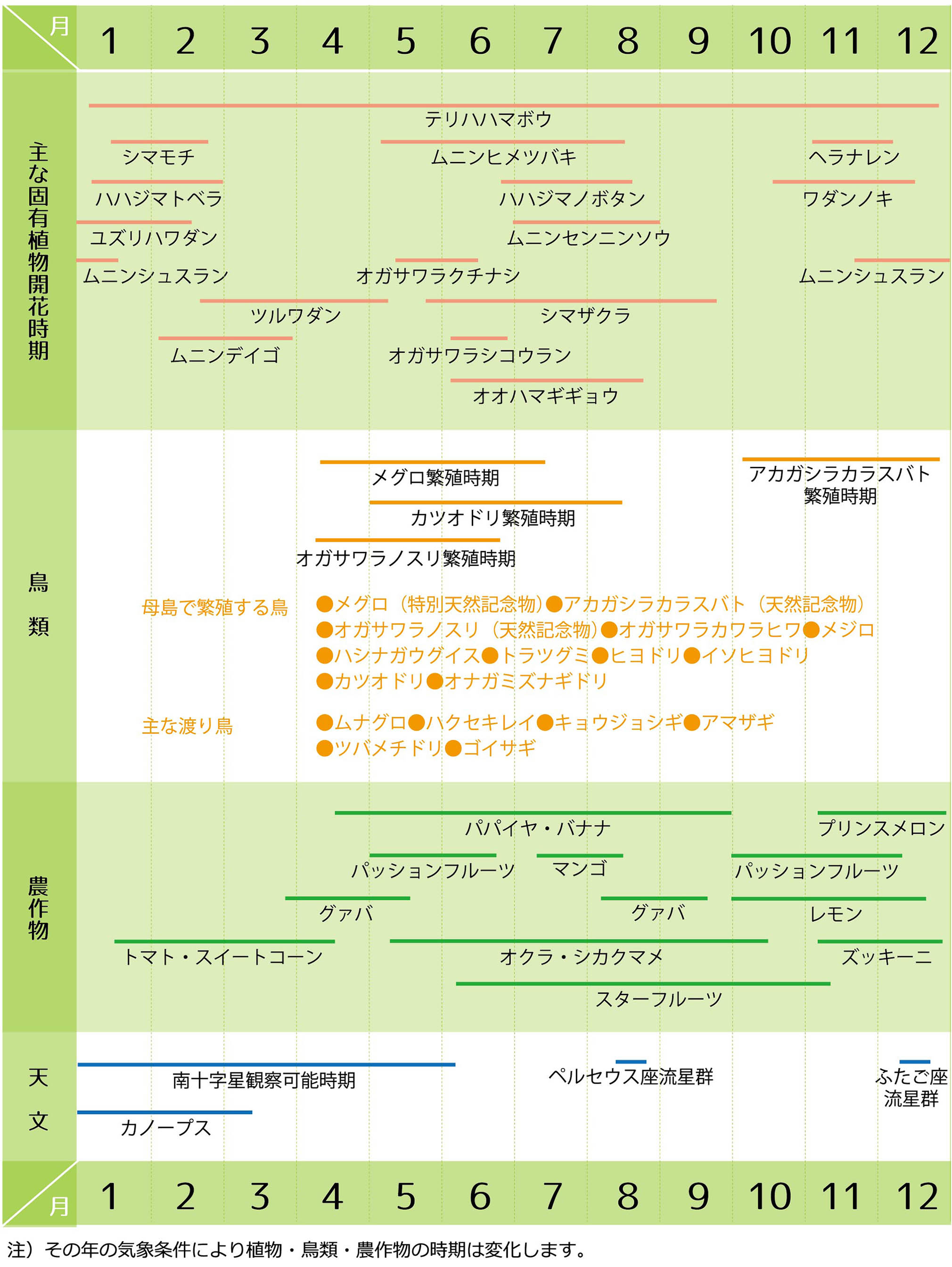
気候
■気温について
小笠原は亜熱帯性気候です。亜熱帯に属する小笠原は年間を通して暖かく夏と冬の気温差が少ないです。温暖多湿な海洋性気候にも属するため、夏は本土並み、冬は本土よりも暖かいです。父島と比べ、母島では蒸し暑く感じるお客様が多いようです。
平均気温24.9℃
最高気温34.0℃(午後1時)
最低気温14.0℃(午前9時)
年間雨量1,127mm
※母島には気象台がないため、気温は乳房ダムにて午前9時、午後1時に計測した数値です。
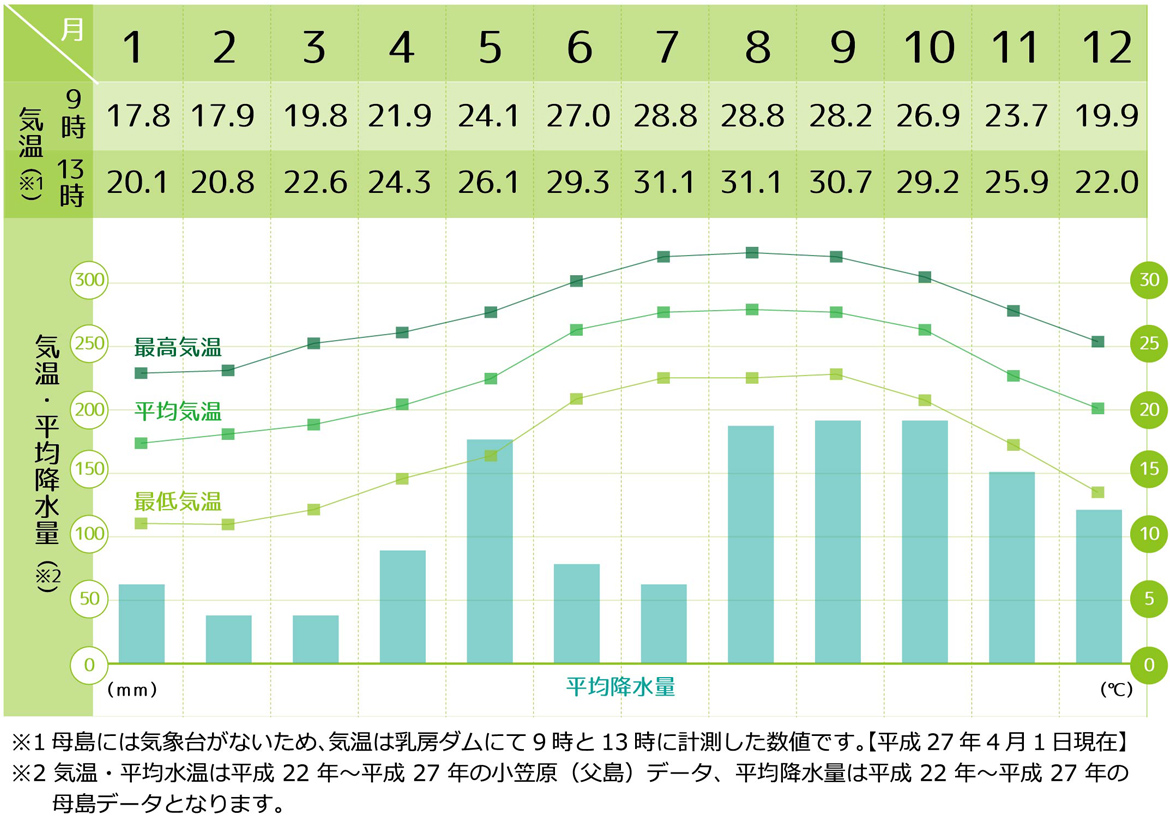
■雨について(雨季)
梅雨前線は小笠原の北に現れることが多いため、小笠原では梅雨はないと言われています。ただ、ゴールデンウィーク明けから1カ月ほどは降水量が多く、雨季となります。また、8月~10月も降水量が多く、スコールが度々発生します。
■台風について
台風は水温が高い季節になると小笠原の南の海上で発生します。小笠原を直撃することはまれですが、近くを通過した場合は船便に影響することがあり、欠航や東京出港が遅れたり、父島出港が早まったりすることがあります。最新の運航については小笠原海運株式会社にお問い合わせください。
■母島の四季について
| 春 | ■4月~5月 [ 日中の気温25℃前後 朝晩の気温18℃前後 ] 日中晴れると夏のような暑さになりますが、天候不順で気温が下がることもありますのでトレーナーやウィンドブレーカー等の上着が必要。5月の初旬~中旬頃からは梅雨のような気候になり、雨の日が続きます。 |
| 夏 | ■6月~9月 [ 日中の気温31℃前後 朝晩の気温24℃前後 ] 日中は湿度が高く陽射しも強いので日焼けと脱水に十分注意してください。集落を離れる場合は1リットル以上の飲み物をお持ちください。山に登る方は2リットル以上の飲み物をお持ちください。8月中旬からは台風シーズンとなります。 |
| 秋 | ■10月~11月 [ 日中の気温28℃前後 朝晩の気温22℃前後 ] 日中晴れると夏のような暑さになりますが、気温の低い日もありますのでトレーナーやウィンドブレーカー等の上着があるといいでしょう。この時期も水温は高い状態が続きますので、晴れていれば遊泳可能ですが、引き続き台風シーズンなのでご注意ください。 |
| 冬 | ■12月~3月 [ 日中の気温20℃前後 朝晩の気温15℃前後 ] 日中晴れると半袖でちょうどいいような日もありますが、北寄りの風が吹いた場合や朝夕冷える場合もありますので、風を通さない厚手の上着、トレーナーなど保温性のある衣類、長袖Tシャツを。下も長ズボンと靴下があるといいでしょう。 |

